Sara Webb
A Lightweight Large Vision-language Model for Multimodal Medical Images
Apr 08, 2025Abstract:Medical Visual Question Answering (VQA) enhances clinical decision-making by enabling systems to interpret medical images and answer clinical queries. However, developing efficient, high-performance VQA models is challenging due to the complexity of medical imagery and diverse modalities. In this paper, we introduce a lightweight, multimodal VQA model integrating BiomedCLIP for image feature extraction and LLaMA-3 for text processing. Designed for medical VQA tasks, our model achieves state-of-the-art performance on the OmniMedVQA dataset. With approximately 8 billion parameters, it requires only two NVIDIA 40 GB A100 GPUs, demonstrating superior efficiency over larger models. Our results show 73.4% accuracy for open-end questions, surpassing existing models and validating its potential for real-world medical applications. Key contributions include a specialized multimodal VQA model, a resource-efficient architecture, and strong performance in answering open-ended clinical questions.
Real-time Detection of Anomalies in Multivariate Time Series of Astronomical Data
Dec 15, 2021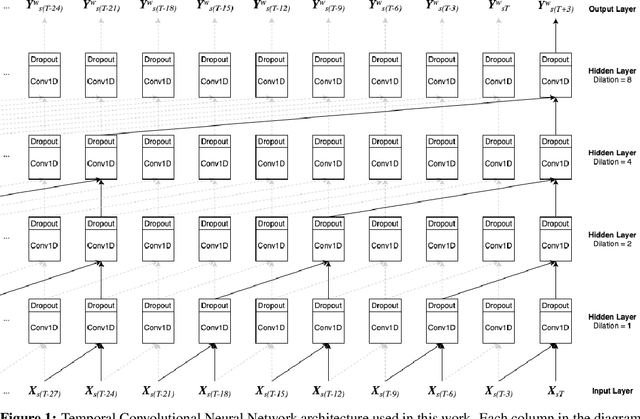


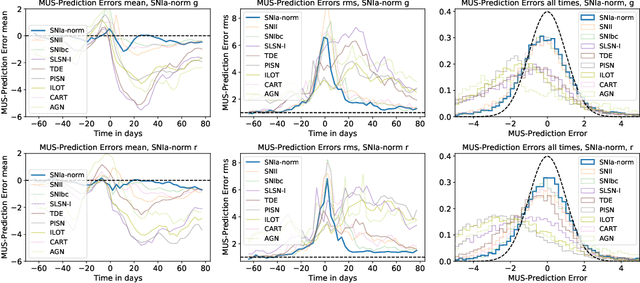
Abstract:Astronomical transients are stellar objects that become temporarily brighter on various timescales and have led to some of the most significant discoveries in cosmology and astronomy. Some of these transients are the explosive deaths of stars known as supernovae while others are rare, exotic, or entirely new kinds of exciting stellar explosions. New astronomical sky surveys are observing unprecedented numbers of multi-wavelength transients, making standard approaches of visually identifying new and interesting transients infeasible. To meet this demand, we present two novel methods that aim to quickly and automatically detect anomalous transient light curves in real-time. Both methods are based on the simple idea that if the light curves from a known population of transients can be accurately modelled, any deviations from model predictions are likely anomalies. The first approach is a probabilistic neural network built using Temporal Convolutional Networks (TCNs) and the second is an interpretable Bayesian parametric model of a transient. We show that the flexibility of neural networks, the attribute that makes them such a powerful tool for many regression tasks, is what makes them less suitable for anomaly detection when compared with our parametric model.
Real-time detection of anomalies in large-scale transient surveys
Oct 29, 2021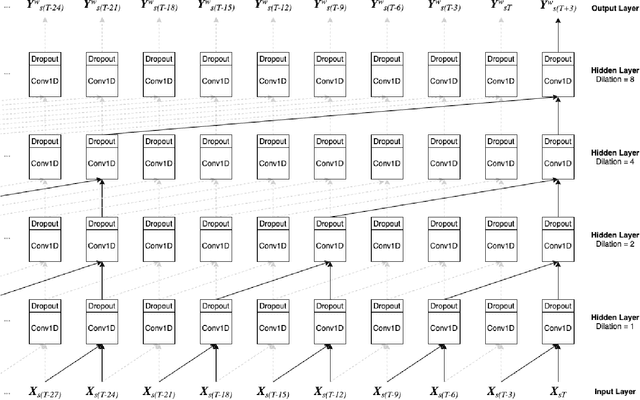

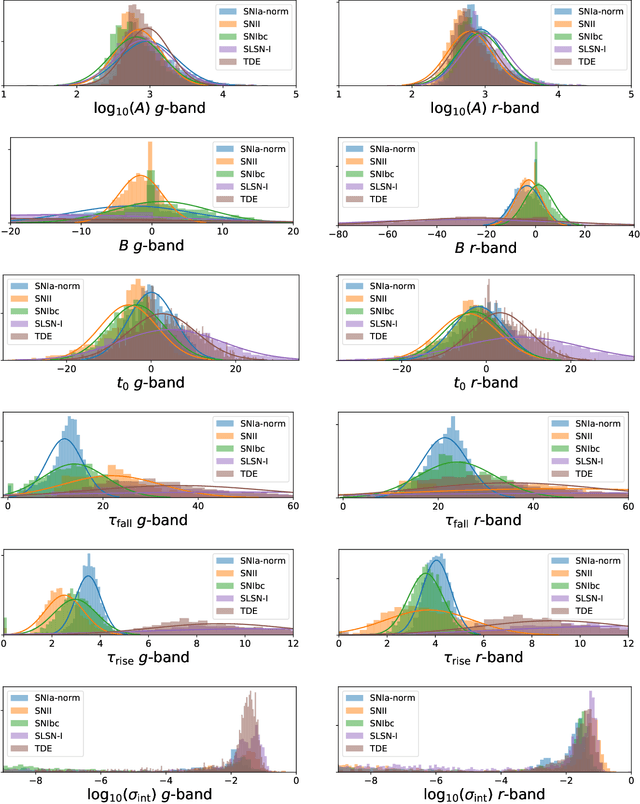
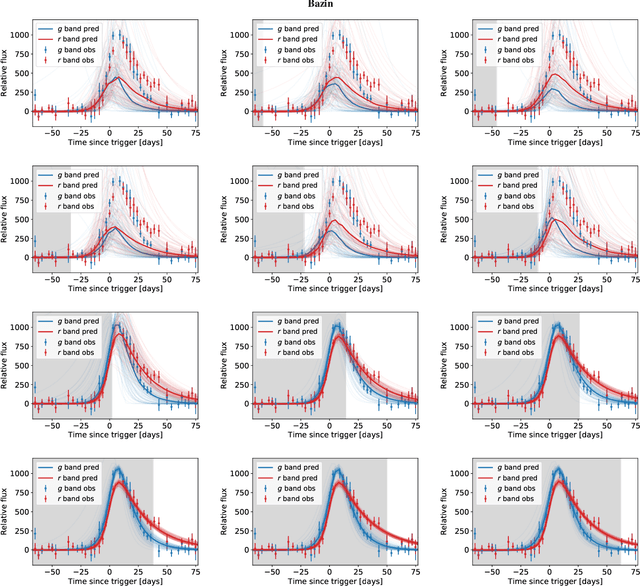
Abstract:New time-domain surveys, such as the Rubin Observatory Legacy Survey of Space and Time (LSST), will observe millions of transient alerts each night, making standard approaches of visually identifying new and interesting transients infeasible. We present two novel methods of automatically detecting anomalous transient light curves in real-time. Both methods are based on the simple idea that if the light curves from a known population of transients can be accurately modelled, any deviations from model predictions are likely anomalies. The first modelling approach is a probabilistic neural network built using Temporal Convolutional Networks (TCNs) and the second is an interpretable Bayesian parametric model of a transient. We demonstrate our methods' ability to provide anomaly scores as a function of time on light curves from the Zwicky Transient Facility. We show that the flexibility of neural networks, the attribute that makes them such a powerful tool for many regression tasks, is what makes them less suitable for anomaly detection when compared with our parametric model. The parametric model is able to identify anomalies with respect to common supernova classes with low false anomaly rates and high true anomaly rates achieving Area Under the Receive Operating Characteristic (ROC) Curve (AUC) scores above 0.8 for most rare classes such as kilonovae, tidal disruption events, intermediate luminosity transients, and pair-instability supernovae. Our ability to identify anomalies improves over the lifetime of the light curves. Our framework, used in conjunction with transient classifiers, will enable fast and prioritised follow-up of unusual transients from new large-scale surveys.
 Add to Chrome
Add to Chrome Add to Firefox
Add to Firefox Add to Edge
Add to Edge